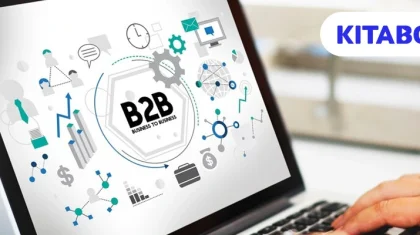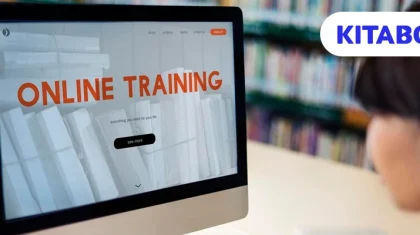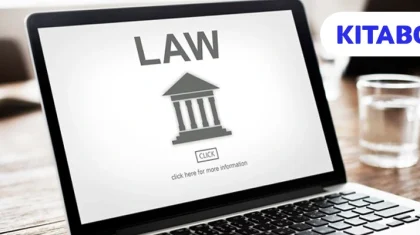Why You Need to Make a Switch to eTextbooks
An e-textbook or digital textbook is the electronic version of a traditionally published textbook that may or may not be available in a paper form. The use of etextbooks is growing at a rapid pace in schools, colleges and universities, and is projected to dominate the textbook market within the next few years.
Publishing companies are also spending a great deal of time and money in developing etextbooks. In this blog, we’re going to discuss the key features and advantages that etextbooks offer to students.
What Are eTextbooks?
Also known as digital textbooks, etextbooks are the digital versions of printed books that can be easily read and annotated from digital devices including tablets, laptops, eBook readers, and smartphones.
Apart from ease of access, page navigation, portability, and ease of reading, etextbooks come with improved interfaces and interactivity to help students learn effectively.
Features of eTextbooks
1. Interactivity
eTextbooks offer a variety of interactive features to make learning customized and more engaging for students. Some of these include multi-color highlights, dictionary, ability to adjust font sizes, copy and paste options, and audio renditions of print.
The digital aspect of these textbooks also helps students in their note-taking habits, without spoiling the pages. In addition to this, many etextbooks also allow you to search for keywords and phrases from within the text, making it much easier to find specific content. This eliminates the need to go through the index pages or manually search for a specific paragraph. Students who are visual learners can especially benefit from using a digital textbook.
2. Portability
eTextbooks can be read on any of the portable devices and does not necessarily require a student to sit at one place for long hours. Additionally, students can carry multiple etextbooks around without needing heavy backpacks. This kind of wireless portability adds to a student’s ease and comfort and allows them to make learning happen effortlessly.
3. Easier to Adapt for Different Learners
Teachers in adaptive services or special education can greatly benefit from working with a digital textbook as they are easier to download and adapt for learners with special needs or reading challenges.
In some cases, the publisher also offers tailored support services for educators preparing specific materials from the textbook to facilitate such learning and helps them scaffold various concepts to make them more accessible to students.
4. Availability of the Most Up-to-Date Information
An etextbook makes the process of editing much simpler and faster. Once a book has gone digital, it can be updated frequently based on the material covered in the book to ensure that the information is the latest and most accurate for students and educators.
Further, the teacher can also observe digitally how the student is performing and adjust course material accordingly.
5. Environment-Friendliness
EPA suggests that paper-based products make up a whopping 18 million tons of waste in landfills. And when combined with the huge cost of production in energy, paper and other material, the traditionally printed textbook brings a negative impact on the environment as compared to their digital version.
With digital textbooks, there is no need for printing and hence the waste is minimal. This is also one of the key reasons why e-textbooks have become so popular in recent years.
Advantages of eTextbooks
Here are some of the biggest benefits you get from switching from paper books to electronic textbooks –
Cost-effective
When compared to printed textbooks, etextbooks are much more cost-efficient. The simple reason is the fact that etextbook production does not require resources such as paper and ink.
On average, etextbooks cost about 50-60% less than print versions, allowing you to save money and use the funds to invest in various additional resources.
Ease of Access
With etextbooks, students no longer have to worry about the availability of a textbook or supplementary study material. They also do not have to wait in a physical store to make a purchase. These digital textbooks can be downloaded and saved on smart devices.
Further, depending on the etextbook provider, some of these can be downloaded and read without an Internet connection, whereas others which are only web-accessible, require an Internet connection to enable the interactive features.
Learning On-the-go
With digital textbooks, students no longer have to worry about carrying a huge weight of books on their backs all the time. All the relevant study material related to their course can be conveniently stored in their smartphones, tablets or ereaders, allowing them to learn on the go.
Versatile Learning Options
Most etextbooks today come with multi-media that helps students gain more clarity on different concepts through embedded videos, interactive quizzes, hyperlinks and social sharing features. They bring course material to life by illustrating the contents of chapters in a visually appealing way to engage students in the learning process.
For example, if a student is unsure about grammar usage in a paragraph, he/she can simply click on a multi-media link and learn more about it from an attached infographic or a video tutorial.
Functionality
When it comes to class assignments and preparing notes, students today are expected to be on top of their game. etextbooks can streamline this task by allowing students to source information from their digital textbooks and enhancing the quality of their class assignments, and in turn, expanding their knowledge.
Note-taking can also be done within the book itself with the help of electronic notes, annotations and highlighting. These annotations can even be shared with peers for quick feedback and collaboration.
To Wrap
Rich, interactive and technology-driven resources such as digital textbooks or etextbooks are the future of education. Today, educators across the globe are focusing their efforts on streamlining the learning process and bringing technology to schools and universities.
With etextbooks, students can access more information to master various new skills and emerge successful in the long-run. It also offers students and teachers an excellent medium of instructions that can support and enhance the overall learning process.
While eBooks will not necessarily replace print books in the near future, they will definitely be used widely to complement the traditional printed books.
Discover how a mobile-first training platform can help your organization.
Kitaboo is a cloud-based platform to create, deliver & track mobile-first interactive training content.


